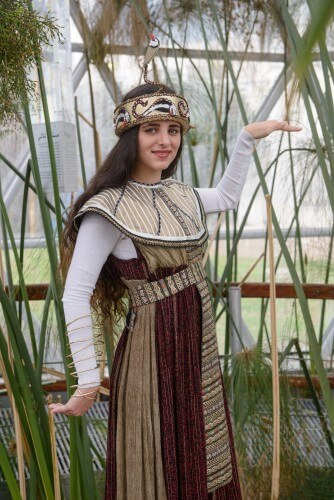An exhibition that will open at the Science Garden in Rehovot on the occasion of Passover will answer all your questions

The Kalor Science Garden, which operates as part of the Davidson Institute for Scientific Education in Rehovot, will hold a special exhibition for the whole family during Passover, in which visitors will be exposed to the ancient period in Egypt and the modern technological means of this period, from thousands of years ago - the Khartoum script, paper from the papyrus plant, methods Special irrigation and the famous pyramids. The exhibition will open to the public on March 26.
Ancient Egypt provides a host of mysteries and conspiracy theories, and there is nothing like Passover to marvel at them anew. To this day, scientists deal with ancient Egypt, mainly because most of the things that happened there during this period are still not explained with certainty and clarity - how were the pyramids built? Who built them? How did the Egyptians move 2 million stones weighing 2.5 tons and raise them to a height of 150 meters using ancient tools? Where is the missing nose of the Great Sphinx of Giza? What is the unique technique of the embalming process? And is it possible that ancient Egypt had the ability to develop electric motors?
Answers to these questions have been kept for years deep under the surface of the ground, and now in a new and unique exhibition of its kind - the mysterious objects and a host of theories about lost technology and ancient scientific wisdom are coming back to the fore.
Alongside the various exhibition displays such as the pyramid, the round plate of Sabo, a pharaonic tomb, an Egyptian boat and more, there will be workshops and activities for the whole family about the scientific technology behind each display. Among the activities - building a huge pyramid using mud bricks, a paper pyramid maze, writing a riddle next to the Rosetta Stone, sending messages in the script of the harpsichords, entering a pharaonic tomb and more.
There will also be other activities for children such as photos on an Egyptian boat against the background of the Nile, and the opportunity to dress up and take pictures dressed in original Egyptian costumes.

5 תגובות
Miracles why don't you leave Egypt (America) and build and improve Israel.
Sharon Dehri
He also built Azrieli.
These are public works for which wages were paid, the Israelites did not build the pyramids. These are dangerous cities for Pharaoh: Pitum and Ramses.
The date of construction of the pyramids. 800. A year ago.. approx. A time when King Solomon lived. He built the pyramids
I liked the picture